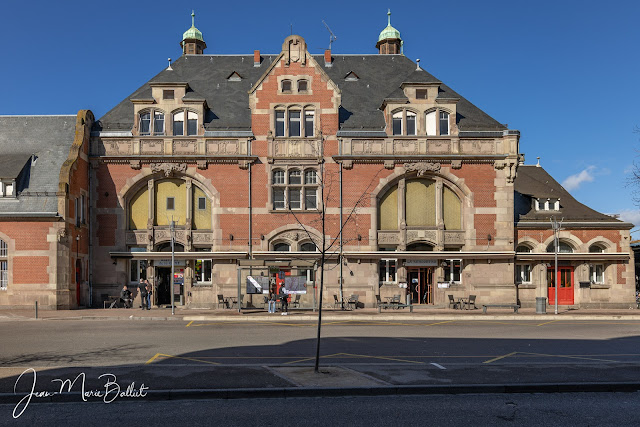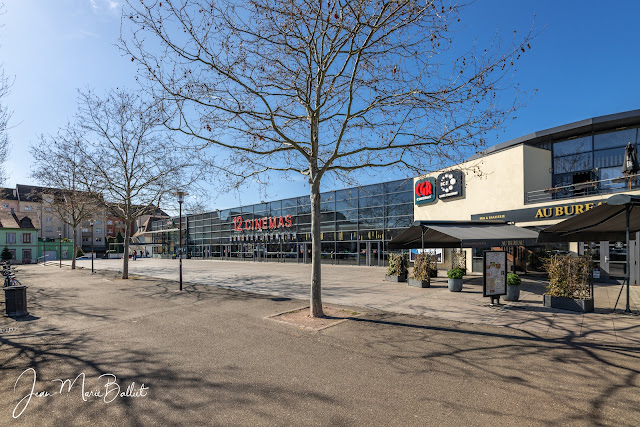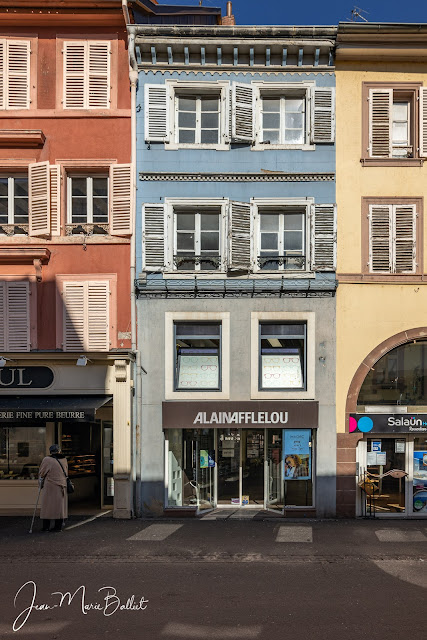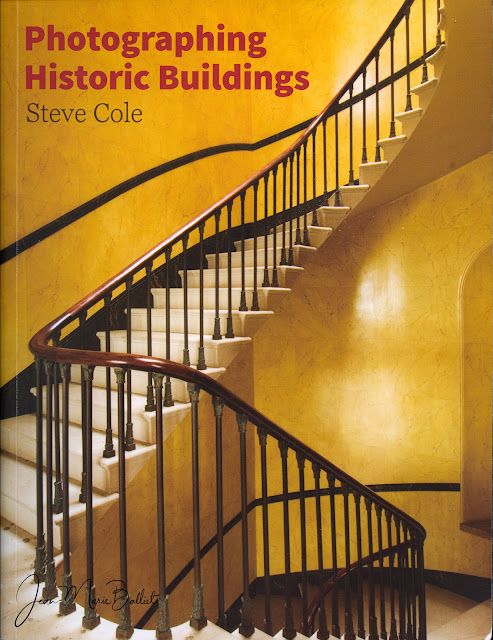Photographier le patrimoine architectural… est-ce simple ou complexe ?
 |
| Gare de Colmar — Buffet de la gare (14 mars 2022) |
_________________________________
Éléments de réflexion…
Proposer des clichés d’architecture illustrant les bâtiments anciens est, d’apparence, peu complexe — « clic-clac et… c’est dans la boîte ! —. Pourtant, lorsqu’il s’agit de proposer des clichés soignés, la réalité est tout autre : en fonction du type de bâtiments, de son orientation, de la saison, on sera amenés à moduler les horaires de prise de vue, à tenir compte d’éventuels obstacles urbains (voitures en stationnement, etc.), du type de lumière, à choisir les optiques adaptées, etc. Et, de facto, la chose apparaît déjà comme sensiblement moins évidente.
_________________________________
Un ouvrage presque « taillé sur mesure » !
Bien évidemment, passionné par la photographie et l’histoire, je compte dans mes bibliothèques quelques ouvrages traitants de la photographie d’architecture. Pourtant, malgré leurs qualités, aucun d’entre eux n’avait su me satisfaire pleinement. Ce n’est que très récemment que j’ai découvert un ouvrage presque taillé sur mesure !
COLE S. - Photographing Historic Buildings. Historic England, Swindon, 2014 ; petit in-4, 248 pp., br.
Cet ouvrage aborde avec élégance un sujet trop rarement abordé : la photographie de bâtiments et éléments d’architecture anciens. Il reprend certaines normes qui devraient être appliquées aux photographies de ce type afin de s’assurer de leur parfaite mise en valeur dans un environnement historique mêlant les éléments anciens et actuels.
Alors que les publications en matière de photographie d’architecture tendent à mettre en avant des aspects tantôt techniques ou artistiques, l’auteur a su rester sobre en mettant en avant… la lumière, naturelle ou artificielle. Cela semble naturel puisque c’est elle qui influence le plus nos photographies et notre compréhension de ce que le photographe souhaite transmettre. Si la capture numérique s’est révélée libératrice pour le photographe, je ne fais pas allusion aux photoscopes que représentent les téléphones, en réduisant les coûts, elle a pu conduire à une approche que l’auteur qualifie assez justement du type de “canon à eau” i. e. de “mitraillage”. Son approche s’appuie sur un processus plus approfondi et mesuré, tout en restant simple. Bien évidemment, des facteurs, tels que le point de vue et les réglages techniques de l’appareil, jouent également un rôle essentiel : ils sont parfaitement illustrés par des exemples de bonnes, mais également de mauvaises pratiques.
In fine, cet ouvrage se révèle, sinon libérateur, pour le moins inspirant, pour ceux qui souhaitent allier efficacité et esthétique dans le domaine si particulier de la photographie de bâtiments.
Balliet J.M. — 15 mars 2022
 |
| CGR Colmar — 1 pl Scheurer Kestner, Colmar |
 |
| 60 r des Clefs, Colmar |
_________________________________
English version
Offering architectural shots of old buildings is, on the surface, not very complex - "click-clack and... it's in the box!" -. However, when it comes to proposing neat shots, the reality is quite different: depending on the type of building, its orientation, the season, we will have to modulate the shooting hours, take into account possible urban obstacles (parked cars, etc.), the type of light, choose the appropriate lenses, etc. And, de facto, the thing already appears as significantly less obvious.
Of course, as a passionate photographer and historian, I have a few books on architectural photography in my library. However, in spite of their qualities, none of them had been able to fully satisfy me. It is only very recently that I discovered a book almost made to measure!
COLE S. - Photographing Historic Buildings. Historic England, Swindon, 2014; small in-4, 248 pp, br.
This book elegantly tackles a subject that is too rarely addressed: the photography of historic buildings and architectural features. It reiterates some of the standards that should be applied to photographs of this type to ensure that they are perfectly displayed in a historic environment mixing old and new elements. If publications on architectural photography tend to highlight technical or artistic aspects, the author has remained sober by highlighting... the light, natural or artificial. This seems natural since it is the light that most influences our photographs and our understanding of what the photographer wants to convey. If digital capture has been liberating for the photographer, I am not referring to the photoscopes that phones represent, by reducing costs, it may have led to an approach that the author quite rightly describes as "water cannon" i.e. "machine gunning". His approach is based on a more thorough and measured, yet simple process. Of course, factors such as the point of view and the technical settings of the camera also play an essential role: they are perfectly illustrated by examples of good, but also of bad practices. In the end, this book proves to be, if not liberating, at least inspiring, for those who wish to combine efficiency and aesthetics in the very particular field of building photography.
Balliet J.M. — 15 march 2022


